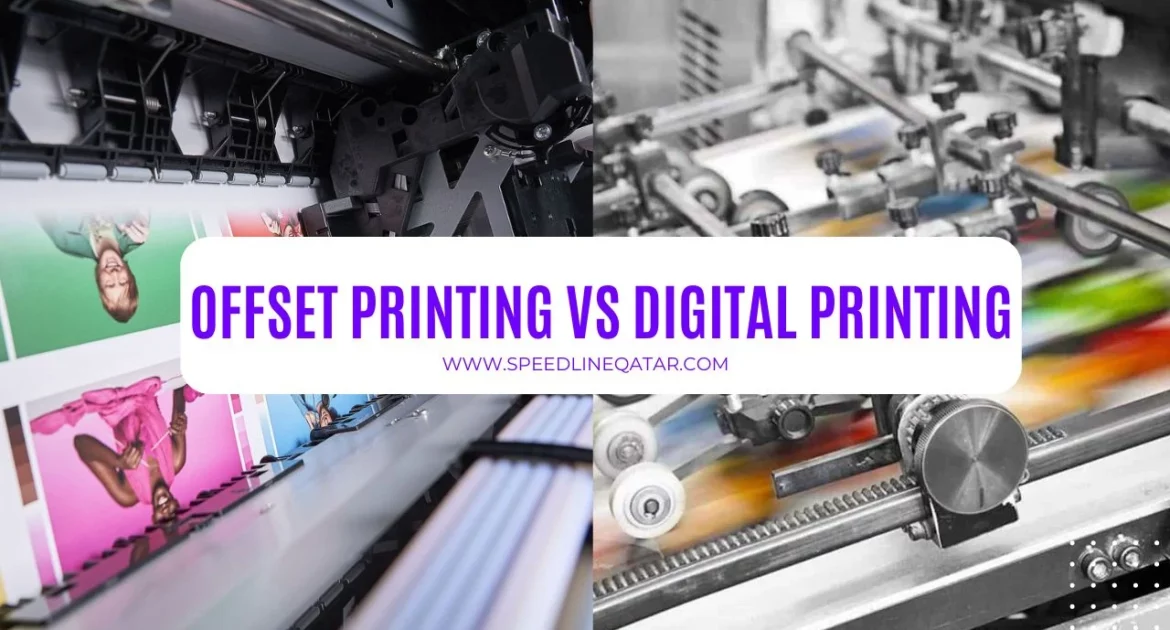When it comes to commercial printing, business owners have three major print technologies to choose from: offset printing, digital printing, or inkjet printing. This dictates what type of printers would be suitable for your business, so it is important to understand the differences between them. Check out this brief guide to help make your decision easier, or call us today for some expert advice.
What is Offset Printing?
Offset printing is a relatively simple printing method. It was invented more than 100 years ago and has changed little since. Offset printing is used to produce large volumes of high-quality output with virtually no variation between images.
The process involves using oil-based inks in four colors: cyan, magenta, yellow, and black. This is often called the “CMYK” color scale. In an offset press, each ink is applied to a separate plate to create an image. The image is then pressed against, or “offset,” to a soft roller. The roller is then used to transfer the image to the printing surface. Each image is laid on top of one another to produce a full-color image. In addition to CMYK process, offset printing also uses pre-mixed Pantone® inks for extreme color accuracy.
What are the Advantages of Offset Printing
- Large quantities can be printed cost effectively
- The more you print, the cheaper the price per piece
- A large variety of paper types with custom finishes can be used
- Special custom inks such as metallic and Pantone colors are available
- Highest possible printing quality, with greater detail and color fidelity
What is Digital Printing?
Digital printing doesn’t use plates the way offset does, but instead uses options such as toner (like in laser printers) or larger printers that do use liquid ink. Digital printing shines when lower quantities are needed; think of a run of 20 greeting cards or 100 flyers. Another benefit of digital printing is its variable data capability. When each piece needs a unique code, name or address, digital is the only way to go. Offset printing cannot accommodate this need. Learn more about digital printing options and capabilities.
While offset printing is a fantastic way to produce great-looking print projects, many businesses or individuals do not need large runs of 500 or more, and the best solution is digital printing.
What are the Advantages of Digital Printing
- Setup costs are lower for short runs
- Print only the amount you need, when you need it
- Lower minimum quantities (as low as 1, 20 or 50 pieces)
- Inexpensive black-and-white digital printing
- Variable data capability (names, addresses, codes or numbering can be done easily)
- Improved technology has made digital quality acceptable for more uses
Which printing process is right for you?
To help you decide which printer is right for you, it is important to consider the following requirements of your print applications: quality, volume, turnaround time, special needs, and cost..When you need larger runs of a project, into the hundreds or thousands, or are using a specific, brand-centric Pantone color, offset printing is the only way to go. You can also use a much wider variety of custom papers and specialty inks, such as metallic or fluorescent inks in the offset process
Quality
The quality of offset printing has long been considered the best of the two options with digital printing coming in at second. Digital output trails because historically it has resulted in inconsistent color and an inferior ability to print fine lines and details. Manufacturers have made great strides over the years though, and now there appears to be little difference in the quality of offset and digital to the untrained eye. Furthermore, digital presses now have built-in features to maintain color integrity throughout a run as well as a wider range or color options like white, clear, metallics, and fluorescents to further bridge the quality gap.
Volume
For smaller print jobs (500 pieces or less), digital printing is the best solution. Digital printing requires little set-up time, no upfront costs, is easier to test, and has a faster turnaround compared to offset printing.
Offset printing, on the other hand, is best suited for large-volume print jobs. Set-up for offset printing is expensive and takes time, so it is only cost effective if the volume is large enough to drive down the cost-per-item.
Turnaround Time
For large volume print jobs, the sheer speed of an offset press is hard to beat. On the other hand, digital printing is typically faster for shorter runs for the following reasons:
- No setup – Users print directly from their computers.
- Less proofing – The first printed item serves as a proof for the whole run. You can also make changes to the printed images more quickly.
- No drying – Most digital presses use dry ink that require no drying time.
- Simplified workflow – Digital printers have automated tools that requires fewer steps to operate.
Cost
Finally, cost is one of the most significant differences between offset printing vs digital printing. If you have a smaller budget, digital printing is probably the way to go because the set-up process is much less expensive and labor-intensive compared to offset printing, so you can maintain high profit margins on smaller jobs. Offset printing Is ideal for larger runs that require the highest quality. Inkjet printers are more expensive than digital printers Initially, but they often have a lower TCO (total cost of ownership) if the print runs are very large.
Not sure what commercial printers are right for your business? Call us today at Speedline Printing Press in Doha Qatar. We will help you decide which printing technology is right for your needs. Call us today at (+97430004519) to learn more!

